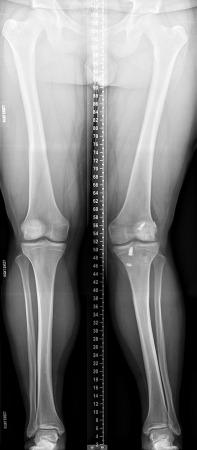Physical Address
304 North Cardinal St.
Dorchester Center, MA 02124
Focal articular cartilage lesions or defects are common in arthroscopic surgery of the knee. Chondral defects may occur as a result of overt trauma, but can also occur because of a de novo process such as osteochondritis dissecans (OCD). Although it is thought that OCD affects the subchondral bone, these lesions can become unstable and thus involve overlying cartilaginous changes. Epidemiologic data on articular cartilage lesions in the pediatric or juvenile population are not clear and vary depending on such factors as body mass index, type of sport, family history, traumatic versus nontraumatic injury, and so on.
In 2004, Oeppen et al. reported chondral injuries occurred in 34% of skeletally immature subjects who had sustained a traumatic event to the knee with suspected internal derangement. The majority of these chondral injuries were located on the femur. In 2013, Kessler et al. used a large integrated health system database of over a million patients between the ages of 6 and 19 years and determined the incidence of OCD of the knee to be 3.3 and 15.4/100,000 for females and males, respectively. In 2017, Ellermann et al. linked juvenile OCD lesions to epiphyseal cartilage necrosis, suggesting there may be a natural progression from epiphyseal cartilage origin to secondary progeny ossification in some OCD occurrences.
Numerous treatment algorithms for addressing OCD injuries exist, including techniques such as drilling of the lesion, osteochondral grafting, fixation with hardware, autologous chondrocyte implantation, and other cell-based therapies. Achieving good outcomes depends on several factors, and even in the most experienced hands complications can still arise. The focus of this chapter will be to discuss the preoperative considerations for the aforementioned techniques, the intraoperative issues that may arise, and how these can be managed. Case examples will be used to illustrate the most germane and technically challenging techniques.
Patients who have sustained a focal cartilage injury can present with a triad of activity-related pain, intermittent knee swelling, and catching or locking. A thorough physical examination is important because this will help narrow the diagnosis. A commonly referenced clinical examination is Wilson’s test, whereby the tibia is internally rotated and brought from 90 degrees of flexion to full extension to detect OCD of the medial femoral condyle of the knee. Clinically this test may have poor reliability, as cartilage injury can occur elsewhere within the knee such as the lateral condyle, patella, or trochlear sulcus, which are not evaluated in Wilson’s test. As such, this clinical examination has fallen out of favor.
Although magnetic resonance imaging (MRI) remains the gold standard imaging modality for evaluating cartilage, most authors recommend plain radiographs for initial radiographic evaluation of the injured knee because of the relative ease and cost, as well as its ability to provide critical information about factors such as limb alignment. Initial radiographs should include the anteroposterior, lateral, sunrise, and Rosenberg views in addition to a full-length lower extremity radiograph such as a scanogram. MRI is important for characterizing abnormalities in the cartilage and subchondral bone, and has the added value of evaluating soft tissue injury. , Chronicity of the injury can be inferred by signs seen in the subchondral bone such as sclerosis, cysts, and the extent and intensity of the bone marrow edema adjacent to the lesion. Specific MRI protocols have been published to better visualize OCD lesions. Bohndorf et al. recommend a T1 weighted, turbo spin echo (TSE) sequence with an additional T2-weighted TSE, gradient echo sequence to assess overlying cartilage, and a short-time inversion recovery sequence for viewing edema. More recently, several sequences have been developed and are showing promise in evaluating cartilage. These sequences include delayed gadolinium-enhanced MRI of cartilage (dGEMRIC), T1 Rho, sodium MRI, and T2 mapping studies. , Ellermann et al. further specify this imaging protocol by identifying the benefits of using the shortest echo time attainable (ideally 4 msec) on a clinical imaging unit. This imaging sequence allows for visualization of a type 1 “entirely cartilaginous lesion,” that is, the earliest stage of OCD development. However, because of concerns over gadolinium saturation in the cartilage, dGEMRIC has more functional utility in a research setting than it does clinically.
Limb and joint malalignment play a role in the development and healing potential of cartilage defects. Obtaining a full-length radiograph such as a scanogram or an EOS image can be beneficial in preoperative planning ( Fig. 21.1 ), as varus or valgus malalignment may contribute to a poor mechanical environment for healing depending on the location of the lesion. In some cases, the use of “guided growth” or corrective osteotomy may be part of the treatment plan to obtain a more normal mechanical or anatomic axis of the extremity.

Become a Clinical Tree membership for Full access and enjoy Unlimited articles
If you are a member. Log in here